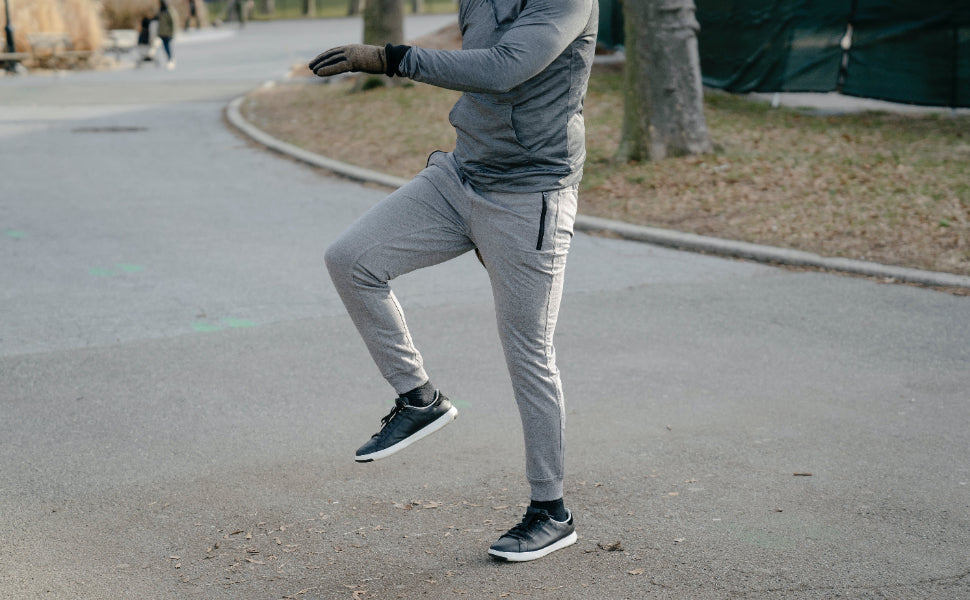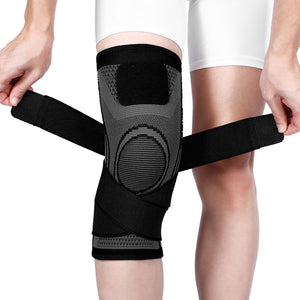Are You Looking for a Knee Brace for Arthritis?

Provides an introduction to the concept of using knee braces for arthritis. The article delves into the various types of arthritis knee braces available, such as unloader braces, preventive braces, and rehabilitative braces. It also addresses the elements to consider when selecting a knee brace and provides instructions on how to use a knee brace for arthritis. Readers can learn more about knee braces by visiting the fivalitness blog.
Types of Knee Braces for Arthritis
There are various varieties of arthritis knee braces available, each designed to provide varying amounts of support and function. The following are the most prevalent forms of arthritis knee braces:
- Unloader knee braces: These braces are designed to redistribute weight away from the problematic area of the knee joint, decreasing pressure and pain. They are frequently administered for patients with mild to moderate medial or lateral compartment osteoarthritis in the knee.
- Prophylactic knee braces: These braces are intended to prevent knee injuries during high-impact or abrupt movements in sports. Prophylactic braces, while not specifically developed for arthritis, can provide additional support and stability to arthritic knees during exercise.
- Rehabilitative knee braces: These braces are intended to give support and protection throughout the healing process after knee injuries or surgery. They can also help arthritis sufferers who need extra support for their weaker or unstable knees.
The sort of knee brace prescribed for an arthritis patient will be determined by the severity of their ailment as well as their unique requirements. A healthcare expert can help an individual select which knee brace is best suited to their situation.
fivalifitness.com
Factors to Consider

There are various aspects to consider while selecting an arthritis knee brace:
- Support level: Knee braces provide varied degrees of support. Consider the severity of your arthritis and the level of support you require to manage your symptoms adequately.
- Comfort: Look for a knee brace that is pleasant to use for extended periods of time. It should fit properly and include padding or cushioning in the appropriate places to avoid discomfort or irritation.
- Material and durability: Consider the materials utilized in the production of the knee brace. Look for textiles that are breathable, moisture-wicking, and long-lasting.
- Size and fit: Ensure you get a knee brace that fits appropriately. It should fit snugly but not too tightly, providing for sufficient support and range of motion.
- Ease of use: Take into account how easy it is to put on and take off the knee brace. Adjustable straps or closures allow you to modify the fit and adjust the level of support as needed.
- Price: Compare the prices of various knee braces while keeping your budget in mind. Remember that higher-quality braces may be more expensive, but they provide better support and durability.
- Insurance coverage: Determine whether your health insurance covers the cost of a knee brace. To explore your coverage options, speak with your healthcare practitioner and insurance carrier.
Always contact with a healthcare expert or orthopedic specialist to choose the best knee brace for your unique condition and needs.
Benefits of Using a Knee Brace for Arthritis
Individuals experiencing knee pain and stiffness may benefit from using a knee brace for arthritis. Among the potential advantages are:
- Pain relief: Knee braces can help relieve arthritis pain by giving support and stability to the affected joint. They can relieve strain on the knee, distribute weight more evenly, and inhibit excessive movement, all of which can increase pain.
- Joint stability is improved: Arthritic knees can become weak and unstable. By providing external support, knee braces can improve joint stability. Individuals can restore confidence in their ability to move and do daily tasks without worry of their knee giving out or buckling as a result of this.
- Improved mobility: Knee braces can assist arthritis patients increase their mobility. They can increase range of motion and make it simpler to walk, climb stairs, or engage in physical activities by lowering pain and giving support.
- Potential surgical postponement: In some circumstances, a knee brace may assist postpone the need for surgery. Individuals may be able to manage their arthritis symptoms more successfully and avoid or postpone surgical intervention by receiving support and pain management.
- Protection during physical activity: Knee braces can provide protection during high-impact or rapid movements in physical activities or sports. They can assist protect the arthritic knee from further injury or damage.
It should be noted that the effectiveness of knee braces varies depending on the individual and the severity of their arthritis. It is best to consult with a healthcare expert or orthopedic specialist to discover if a knee brace is appropriate for you and to obtain personalized instructions on how to wear it.
fivalifitness.com
*Disclaimer
The information provided in articles written by Fivali is intended for educational and reference purposes only. The content on this website (www.fivalifitness.com) is not intended to diagnose, treat, cure, or prevent any disease. We do not recommend self-diagnosis or self-treatment based on the information provided in our articles. Always consult a qualified healthcare professional if you have any concerns about your health or well-being.
If you are experiencing any symptoms or discomfort, we strongly encourage you to seek medical attention from a qualified healthcare professional. Only a licensed healthcare practitioner can provide an accurate diagnosis and an appropriate treatment plan tailored to your individual needs.
-
Posted in
featured, Healthy Lifestyle, Joint, Pain, Recovery













